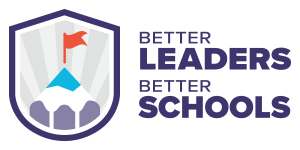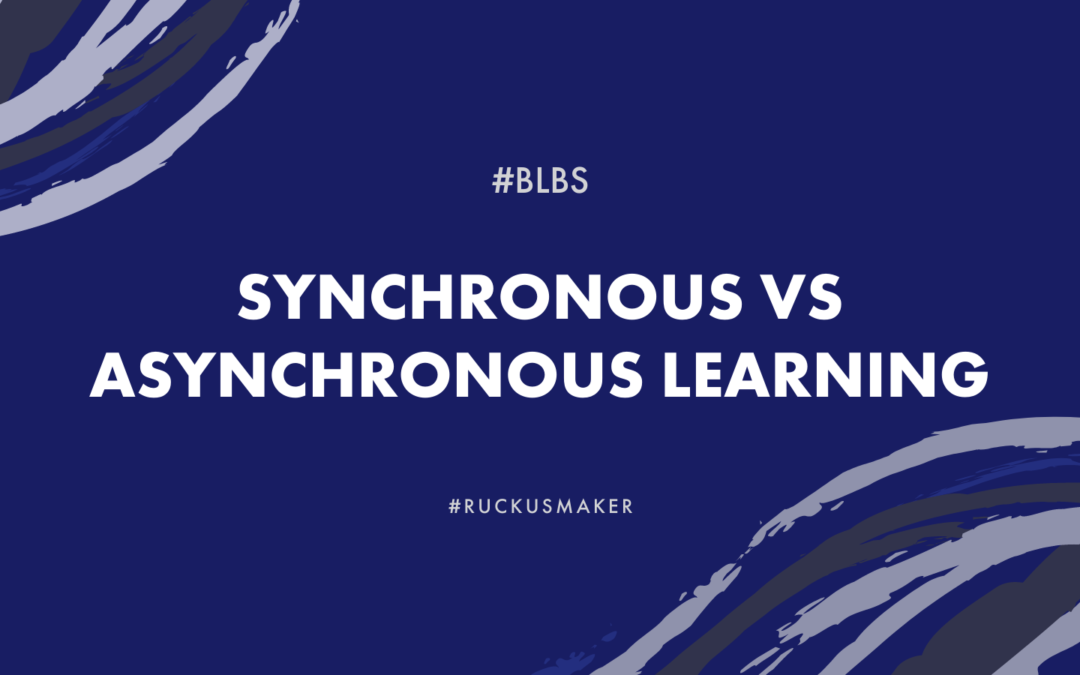Many of the articles online discuss the pros and cons of asynchronous and synchronous learning from one perspective (e.g. the teacher’s perspective) or are designed to help educators prepare their lessons for each kind of learning.
This blog post is different in two ways.
- It explores the pros and cons from a variety of stakeholder perspectives (teacher, students, and parents).
- It adds a new kind of learning to the discussion which we are calling, “semi-synchronous.”
What is asynchronous, synchronous, and semi-synchronous learning?
Synchronous learning is learning that happens together. Here, teachers meet with their students in “real time.” The traditional model of school has followed this format since inception. During the pandemic, many schools shifted resources to video platforms (e.g. Zoom or Google Hangouts) to host classes like they would face-to-face, just online.
Asynchronous learning happens independently. Teachers prepare and record lessons ahead of time and host those lessons for students to access when they want to engage. Just like Netflix, students can access content “on demand” at any time that works for them.
Teachers can opt to record their own direct instruction but some choose to use existing resources like Khan Academy, Crash Course, or Bozeman Science.
Semi-synchronous learning is a mashup of synchronous and asynchronous learning. Teachers prepare or access prerecorded lessons and host them for students to access when it is convenient (aka asynchronous learning).
However, in semi-synchronous learning teachers meet with students in real time (aka synchrony) but the focus of these virtual meetings is not direct instruction or the “teaching” of content. Rather, the purpose of these synchronous meetings is to check in with students. Perhaps to review material that students accessed prior to the meeting to clarify misconceptions or to check in students personally about their wellbeing.
Structure is what makes both asynchronous and synchronous learning successful. Similar to in-class instruction, distanced-learning lesson plans that are well structured, with predictable rhythms, create more productive learning environments.
What are the pros and cons of asynchronous, synchronous, and semi-synchronous learning?
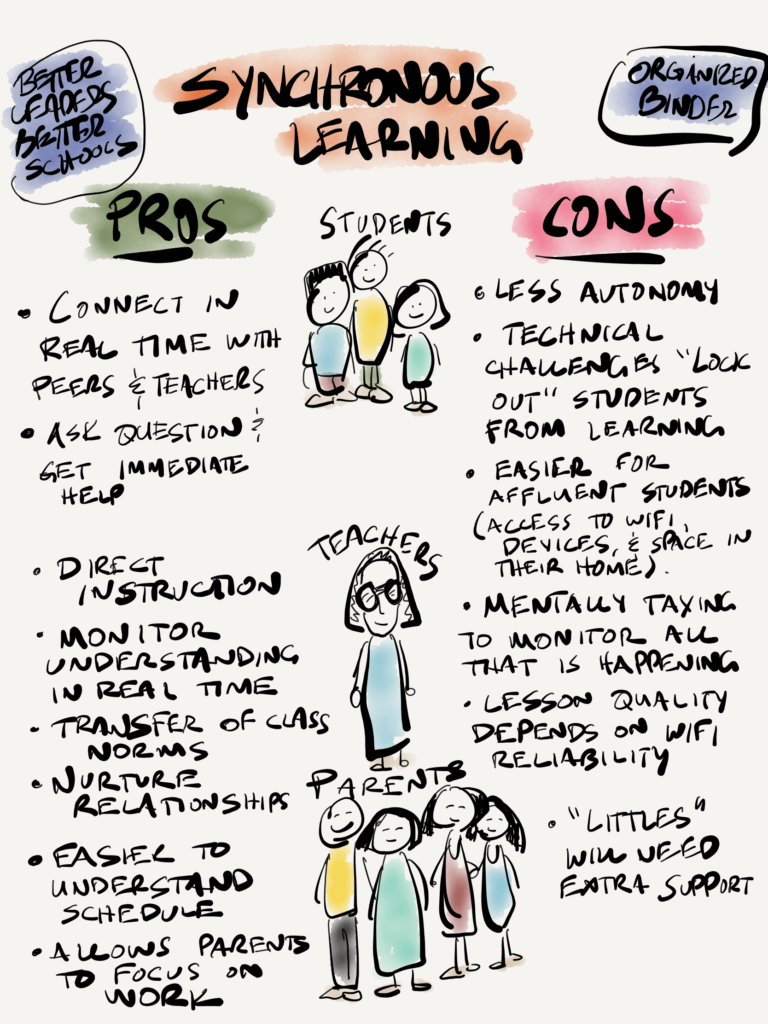
Synchronous learning environments can be more personal. Teachers can check-in with students and offer immediate formative feedback. Students can ask questions in real time and get needed clarification. Some challenges with synchronous classrooms is getting all students logged in and involved at the same time. If one student’s internet goes down they may miss the lesson. For larger groups, addressing individual needs or questions can be a challenge.
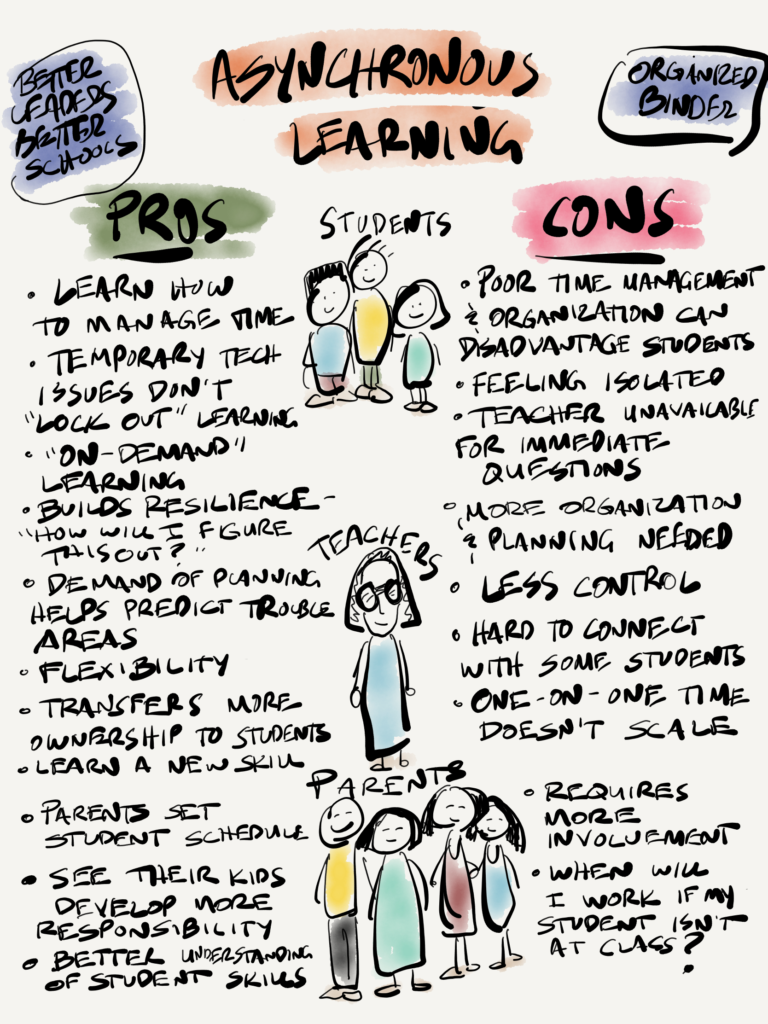
For asynchronous classrooms the obvious win is that students can engage in the lesson whenever it is convenient for their schedule. One positive here is that students are encouraged to practice designing their schedule, a skill they will use the rest of their lives.
If a student’s internet drops, no problem, they can pick up where they left off when they can get back online. The biggest challenge for asynchronous learning is personalization. Since teachers are not engaging in real time, students, as well as teachers may feel isolated.
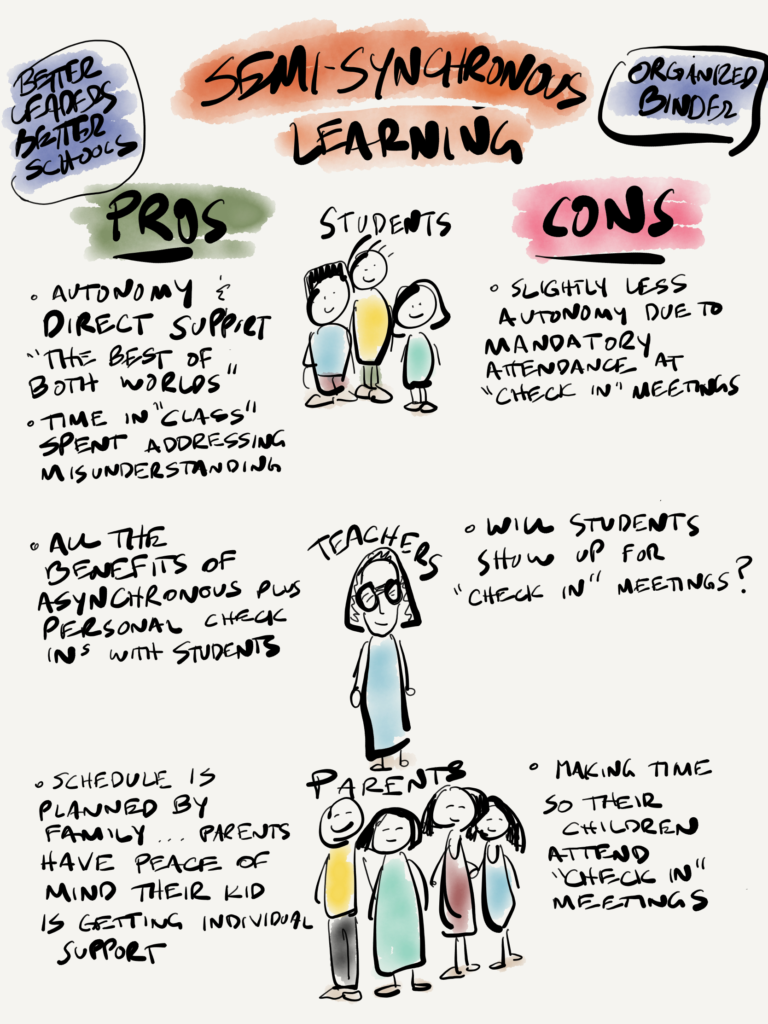
The blended model of semi-synchronous learning is the best of both worlds. There is the flexibility and autonomy of asynchronous learning followed by the personal connection found in synchronous learning. The biggest challenges in this blended model are making sure students attend their “check-in” meetings and the reality that some students will show up without doing any work on their own.
Final thoughts regarding asynchronous, synchronous, and semi-synchornous learning
Whether or not you prefer synchronous or asynchronous teaching is really a personal or school choice.
After 18 years teaching in a traditional brick-and-mortar school I am starting my third year teaching a 100% online asynchronous school.
I love it.
To me this new environment is actually more similar to the traditional classroom than I first expected, with the major difference being the delivery of “direct instruction.”
I have built my new “classroom” just as I would in my past synchronous classroom. Students have an explicit starting and ending routine that gives them practice with retrieval practice (Powerful Teaching) and a chance to clarify misconceptions, just as they would in my classroom.
Students map out their daily and weekly plan, organize all of their schoolwork and resources, just as they would in the classroom. My students set quarterly goals and are held accountable to stay organized so they can create a portfolio for the entire school year, just as they would in my classroom.
Structure is everything in an asynchronous online environment. My students are wildly successful because they are being forced to move beyond their “to do” list. My students find themselves embraced by the same predictable lesson structures that promote learning in a traditional learning environment even though they are engaging in their schooling independently at a time that fits their schedule.
Whether students are in a synchronous, asynchronous, or semi-synchronous learning environment one thing is certain – just like in an effective in-person classroom, students thrive in a predictable, structured, learning environment. With Organized Binder the same classroom structures that help students succeed can be very simply implemented at home to help students be more successful in a distance learning scenario.
